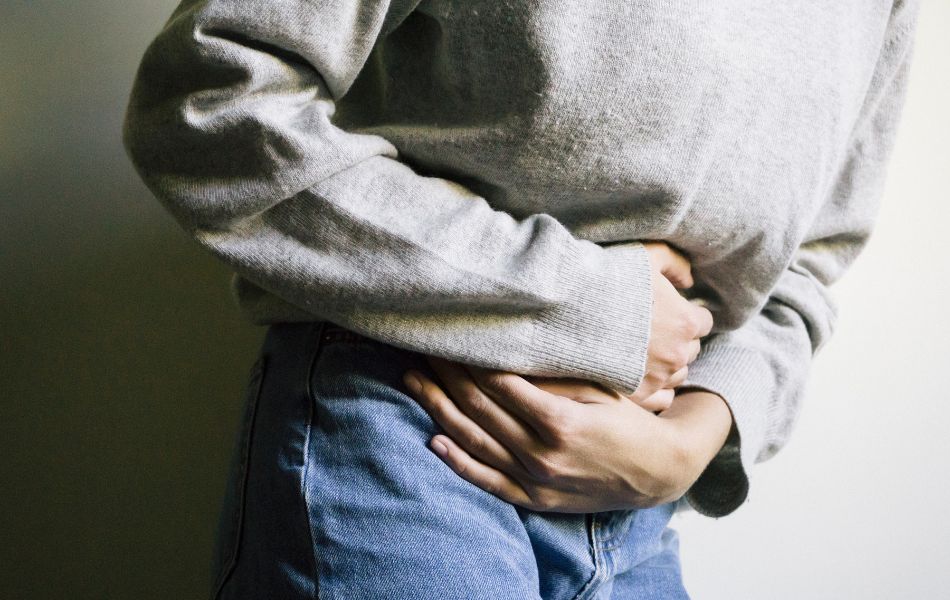
Period pain is an unfortunate but common phenomenon. Recent surveys say that more than 80 percent of women will experience painful periods at some point in their lives, and over half of women who menstruate feel discomfort every cycle. But when does a painful period cross the threshold of more serious health problems?
While some discomfort is normal, many women unknowingly have endometriosis. This condition affects an estimated 11 percent of women between the ages of 15 and 44. It can develop in women only a few years after the first menstrual period. But many will be asymptomatic until the condition is severe. Furthermore, the signs of endometriosis are easy to mistake for other conditions, and it’s common for women to mistake them for standard period pain.
So, what are the differences between endometriosis vs menstrual cramps?
Normal Menstrual Cramps
Cramps are a relatively normal part of the menstrual cycle. Not everyone experiences them. Some have no discomfort at all, while others only navigate mild issues during their cycles. But for some women, cramps can cause debilitating pain lasting several days.
Typically, menstrual cramps begin one to three days before your period. They can peak within 24 hours after your period starts before subsiding a few days into menstruation.
Cramps occur when the body produces high levels of a hormone-like substance called prostaglandins. Prostaglandins are necessary for menstruation because they trigger your uterus to contract and shed its lining. The period pain you feel during this time is the byproduct of those contractions. It can create a throbbing sensation in the lower abdomen. Higher levels of prostaglandins can lead to severe cramps.
Fortunately, the pain and discomfort are temporary, and there are many ways to address cramps. But for women who suffer from substantial period pain, it can be difficult to distinguish endometriosis vs. menstrual cramps.
RELATED: Pelvic Pain: When is it Serious?
Signs and Symptoms of Endometriosis
Endometriosis occurs when tissue or cells from the uterine lining move and proliferate outside the uterus. Endometrial tissue can end up somewhere in the pelvic cavity, bowel, bladder, fallopian tubes, ovaries, and other pelvic organs. Those implants can grow and bleed inside the abdomen as hormones from the ovaries feed them.
The body responds to the tissue, resulting in inflammation. The pain women feel with endometriosis is the byproduct of that inflammation.
The symptoms of endometriosis can vary. What’s worse is that endometriosis may not cause symptoms at all. It’s common for women to live with this condition for many years until it gets severe enough to cause debilitating pain.
The most common sign of endometriosis is experiencing a painful period every cycle. Timing is an important factor when determining whether discomfort results from endometriosis vs. menstrual cramps, timing is an important factor. Menstrual cramps typically begin several days before the period starts. But with endometriosis, pain occurs throughout your period.=
Women also often feel pain during intercourse. Some feel it during a bowel movement or urination. Every woman experiences endometriosis differently, and the pain level depends on how severe the issue is. In most cases, period pain is cyclical. However, it can also be chronic and debilitating.
Endometriosis may also cause menstrual irregularity. That can include heavy bleeding and unpredictable cycles. A recurring painful period becomes common over time as the condition worsens. Eventually, the proliferating tissue in the abdomen can damage nearby organs and cause infertility.
RELATED: Endometriosis Diet: What To Eat And What To Avoid
Endometriosis vs. Menstrual Cramps Treatment
There are significant differences in treating endometriosis vs. menstrual cramps.
Treatment for menstrual cramps often involves over-the-counter pain relievers. Regularly taking these medications starting the day your period begins can help manage pain. For more serious cases, your doctor may prescribe non-steroidal anti-inflammatories.
Many women also turn to breathing exercises, heating pads, and muscle-relaxing activities to address discomfort.
Treating endometriosis is a different process. Some techniques for dealing with menstrual cramps may provide relief, but successful treatment involves addressing the tissue causing inflammation. Depending on the severity of the case, doctors may recommend hormonal birth control or medications to stunt tissue growth. However, the most effective treatment is often surgical.
Dr. Michael Tahery performs minimally invasive laparoscopy to diagnose and remove endometriosis. While other diagnostic approaches can indicate endometriosis, laparoscopy is the proper way to diagnose the condition. Dr. Tahery can perform the laparoscopy through the belly button to analyze the tissue. If appropriate, Dr. Tahery can remove the excess tissue growing outside the uterus.
Individualized treatment is crucial for painful periods or endometriosis. So If you’re unsure whether your pain is a product of endometriosis vs. menstrual cramps, you can turn to Dr. Michael Tahery. Dr. Tahery has over two decades of experience treating women in the Los Angeles area. He’s a board-certified OB/GYN, a member of the Cedars Sinai Center of Excellence in minimally invasive surgery, and an expert in treating endometriosis. You can trust Dr. Tahery to take care of your needs and provide the personal treatment you need. Contact our offices today to schedule an appointment with Dr. Tahery and discuss your period pain or endometriosis worries